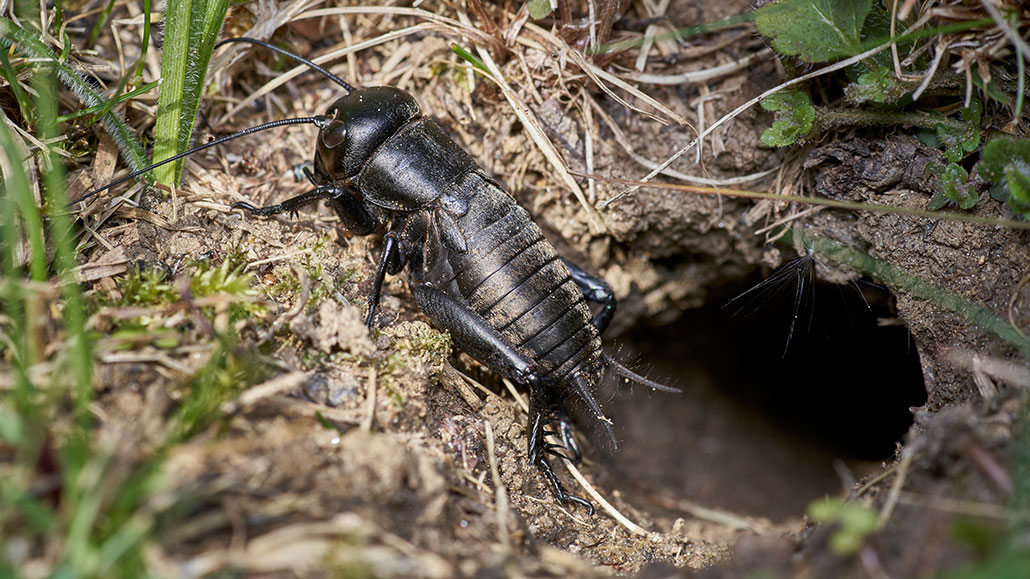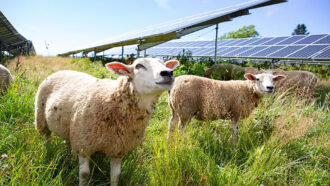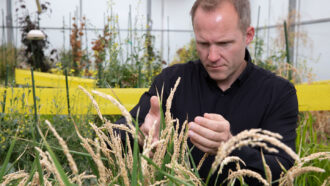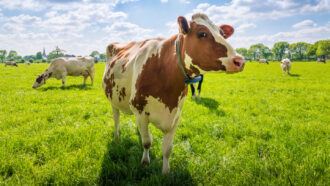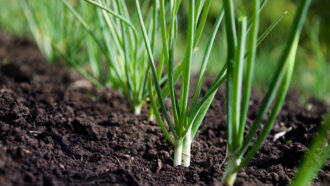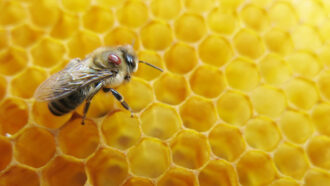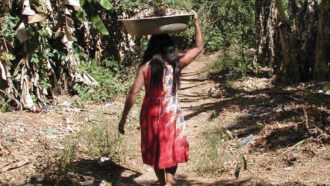acidic: An adjective for materials that contain acid. These materials often are capable of eating away at some minerals such as carbonate, or preventing their formation in the first place.
alkaline: An adjective that describes a chemical that produces hydroxide ions (OH-) in a solution. These solutions are also referred to as basic — as in the opposite of acidic — and have a pH above 7.
archaea: (singular: archaeon) One of the three domains of life on Earth. This group consists of single-celled prokaryotes — organisms without a cell nucleus. Archaea are best known for living in extremely harsh environments, such as very salty water or highly acidic or hot places.
arthropod: Any of numerous invertebrate animals of the phylum Arthropoda, including the insects, crustaceans, arachnids and myriapods, that are characterized by an exoskeleton made of a hard material called chitin and a segmented body to which jointed appendages are attached in pairs.
bacteria: (singular: bacterium) Single-celled organisms. These dwell nearly everywhere on Earth, from the bottom of the sea to inside other living organisms (such as plants and animals). Bacteria are one of the three domains of life on Earth.
beetle: An order of insects known as Coleoptera, containing at least 350,000 different species. Adults tend to have hard and/or horn-like “forewings” which covers the wings used for flight.
cell: The smallest structural and functional unit of an organism. Typically too small to see with the unaided eye, it consists of a watery fluid surrounded by a membrane or wall. Depending on their size, animals are made of anywhere from thousands to trillions of cells. Most organisms, such as yeasts, molds, bacteria and some algae, are composed of only one cell.
concrete: (in construction) A simple, two-part building material. One part is made of sand or ground-up bits of rock. The other is made of cement, which hardens and helps bind the grains of material together.
earthworm: A type of worm that lives in the soil. As it moves through soil, an earthworm creates burrows. These allow air and water to move more readily through the soil. The worms feed on decaying organic matter, which helps improve soil fertility.
family: A taxonomic group consisting of at least one genus of organisms.
forest: An area of land covered mostly with trees and other woody plants.
insect: A type of arthropod that as an adult will have six segmented legs and three body parts: a head, thorax and abdomen. There are hundreds of thousands of insects, which include bees, beetles, flies and moths.
wood louse: A land-dwelling crustacean that has a somewhat flat body shaped like an ellipse. It is often found around wood (hence its name) and can roll itself up into a ball. It is also called a sow bug.
microbe: Short for microorganism. A living thing that is too small to see with the unaided eye, including bacteria, some fungi and many other organisms such as amoebas. Most consist of a single cell.
mite: An invertebrate belonging to the broad group of animals known as arachnids, which also include spiders and ticks. None of these are insects, although like insects they belong to the larger umbrella group, called arthropods (named for their members’ segmented legs).
nematode: A type of roundworm, usually found in soil, that also can live within other creatures as a parasite. It is usually quite small, with no eyes, ears or nose. However, the occasional species can grow up to a meter long.
organism: Any living thing, from elephants and plants to bacteria and other types of single-celled life.
planet: A large celestial object that orbits a star but unlike a star does not generate any visible light.
species: A group of similar organisms capable of producing offspring that can survive and reproduce.
spider: A type of arthropod with four pairs of legs that usually spin threads of silk that they can use to create webs or other structures.
square: (In mathematics) A number multiplied by itself, or the verb meaning to multiply a number by itself. The square of 2 is 4; the square of 10 is 100.
wood: A porous and fibrous structural tissue found in the stems and roots of trees, shrubs and other woody plants.
